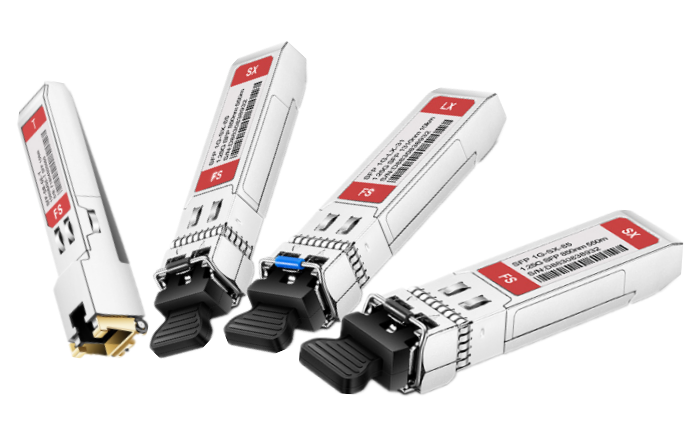Fibre Channel vs Ethernet SFP
Speaking of Fibre Channel vs Ethernet, Fibre Channel SFP and Ethernet SFP are two major topics argumentative for a long time. Then, what’s the difference between them? Next, detailed illustration will be given to guide you on what is Fibre Channel and the comparison of Fibre Channel vs Ethernet SFP.
What Is Fibre Channel?
Fibre Channel, also known as FC, is a high-speed network technology used to connect computer data storage to servers. It is frequently seen in use in commercial data centers. Commonly running at a Fibre Channel speed of 1, 2, 4, 8, 16, 32 and even 128 Gbps, it provides in-order and lossless delivery of raw block data in storage area network (SAN). It handles high-performance disk storage for applications on many corporate networks, and it supports data backups, clustering and replication.
It is named Fibre Channel rather than Fiber Channel because the technology supports both fiber and copper cabling. However, copper limits Fibre Channel to a maximum recommended reach of 100 feet, whereas fiber optic cables reach up to 6 miles with more expensive cost.
Fibre Channel does not follow the typical OSI model layering. It is split into five layers, namely, FC-0, FC-1, FC-2, FC-3 and FC-4. The Fibre Channel physical layer is based on serial connections that use fiber optics or copper between corresponding pluggable modules. Each module or optical transceiver may have a single lane, dual lanes or quad lanes that correspond to the SFP, SFP-DD and QSFP form factors.
Fibre Channel vs Ethernet SFP
When it comes to Fibre Channel vs Ethernet, it is inevitably concerned with the small form-factor pluggable (SFP) module. The SFP connected to Fibre Channel can be regarded as Fibre Channel SFP while regarded as Ethernet SFP or gigabit SFP when connected to Gigabit Ethernet. The SFP module and its enhanced version SFP+, SFP28 and SFP56 are common form factors for Fibre Channel ports.
To have a further understanding of Fibre Channel vs Ethernet SFP, you can compare them in the following aspects:
Fibre Channel is more reliable than Ethernet in terms of lossless protocol. Fibre Channel SFP can provide in-order and lossless delivery of raw block data while Ethernet SFP can’t.
Fibre channel supports a transmission speed of 1, 2, 4, 8, 16, 32, and 128 Gbps. While, the speed of optical transceiver used in Ethernet ranges from Fast Ethernet of up to 100 Mbps, Gigabit Ethernet of up to 1000Mbps, 10 Gigabit of up to 10 Gbps to even some 40 or 100 Gbps today.
Normally, a Fibre Channel SFP is more expensive than an Ethernet SFP. The former is more popular in big enterprise network while the latter is commonly used in small-to-medium businesses.
Conclusion
From all the above, Fibre Channel and Ethernet are two different technologies used in telecommunications. The comparison of Fibre Channel vs Ethernet SFP in this post can help you understand these technologies better involved with reliability, transmission speed and cost.
Original source: http://www.fiberopticshare.com/fibre-channel-vs-ethernet-sfp.html


 Rita
Rita







